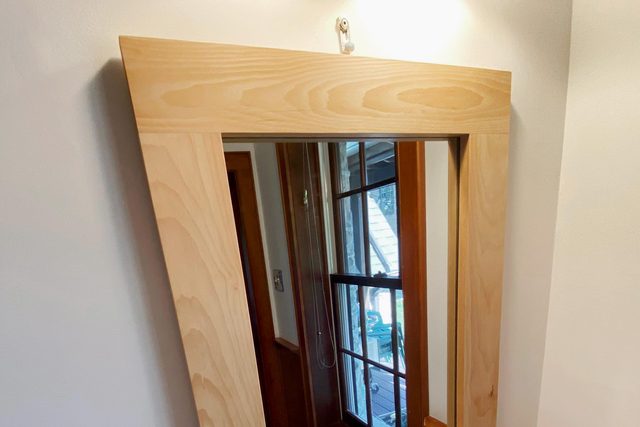How To Frame a Bathroom Mirror
Updated: Feb. 07, 2024
Framing a mirror isn't complicated or expensive, even for a novice DIYer.
A full day
Beginner
Less than $20
Introduction
If you're not happy with the look of an unframed mirror, you can frame it yourself for less than $20— even if you're a beginner. Here's how.Tools Required
- 120-grit sandpaper
- Circular saw or miter saw
- Orbital sander
- Pocket screw drilling jig
- Screwdriver
- Tape measure
Materials Required
- 1-3/4-in. wood screws
- 1x4 Lumber
- Mirror
Project step-by-step (10)
Buy and Measure the Mirror
- Determine the size of the mirror you’d like to frame. Here we used a 20-in. x 30-in. mirror.
- Be sure the unframed mirror is completely flat and smooth across its entire surface. Some mirrors have beveled edges, which won’t work for this project.
- Measure the dimensions of your mirror and make note of the precise length and width.
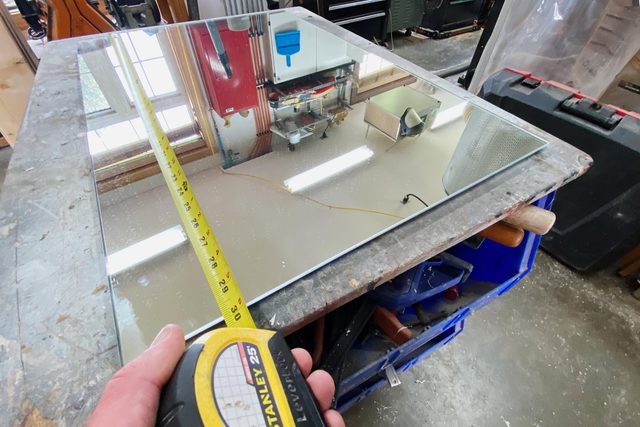
Measure and Cut Parts
- Measure and cut your 1×4 lumber (actual dimensions 1/2-in. x 3-1/2-in.) into four pieces, aiming to make a frame that protrudes 1-in. beyond the mirror’s edges on all sides.
- Cut the parts so the horizontal frame members (rails) cap the vertical frame members (stiles), and not the other way around. Doing it this way makes for a better-looking frame (see photo). So if your mirror measurements are 20-in. x 30-in., cut two 22-in. pieces of 1×4 and two 25-in. pieces of 1×4. The 22-in. frame pieces will go on the top and bottom of the mirror and extend 1-in. beyond each side of the mirror. The 25-in. pieces will fit between the top and bottom frame pieces.
- Use a miter saw or hand saw to make the cuts, ensuring they’re exactly 90 degrees to the board’s edge. You’ll find it much easier to get smooth, precise cuts with a miter saw.
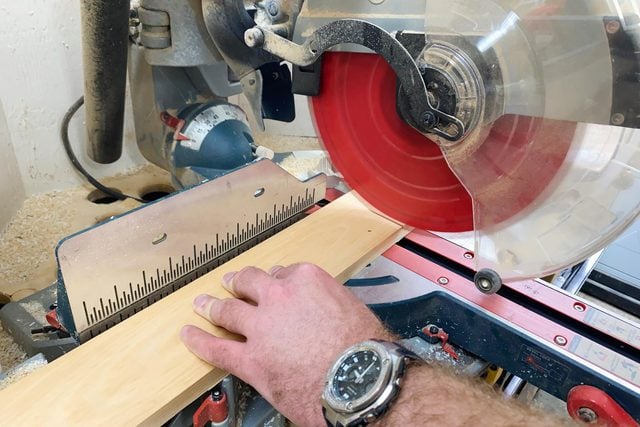
Dry-fit Frame Parts
- Lay your cut frame pieces down on the mirror and see how they fit together. You should get a fairly tight, gap-free fit with 1-in. of the frame overhanging the edges of the mirror on all sides.
- If the fit isn’t good, figure out where you went wrong and re-cut the parts.
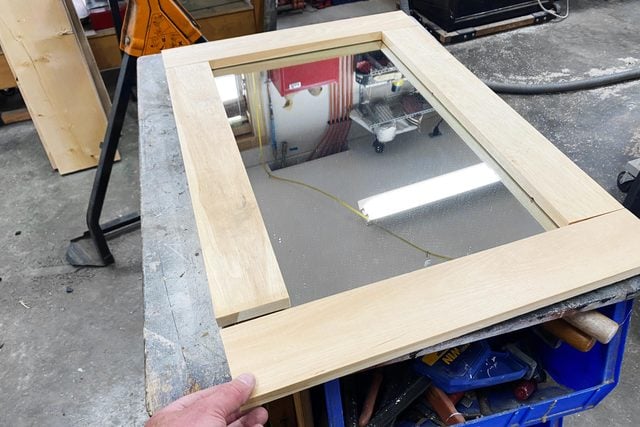
Drill Holes for Pocket Screws
Note: This step and the next one aren’t strictly necessary. But they allow you to join the frame parts ahead of time, leading to a much tighter fit at the joints and an easier gluing process.
- Use your drill and pocket screw drilling jig to drill holes for pocket screws on all four ends of the vertical frame members.
- Clamp the jig down before drilling to ensure it doesn’t move while you’re making each hole.
- Position the jig flush with the end of each frame member you’re drilling, 1/4-in. in from the closest edge.
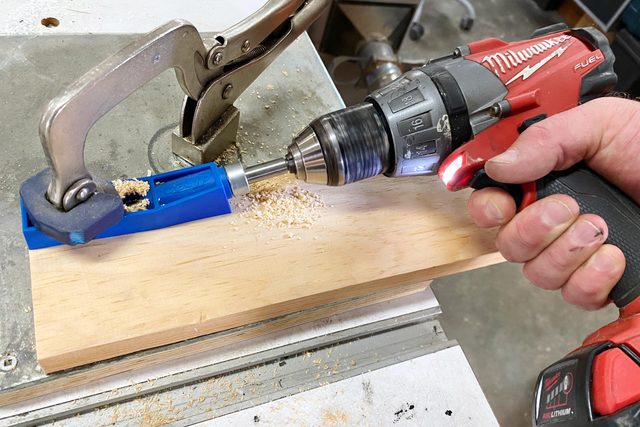
Join the Frame Members
- Use your screwdriver and 1-3/4-in. wood screws to join the four frame members.
- Be sure the edges and ends of the parts are flush with each other.
- Tighten the screws just enough to pull the parts together and remove any gaps. Don’t overtighten or you’ll strip the holes and the screws won’t grab the wood.
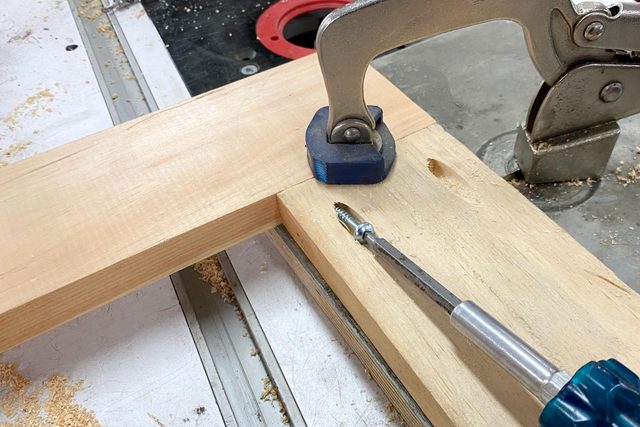
Sand the Frame
- Sand the front face of the frame with a 5-in. random orbital sander with a 120-grit disc. If using pocket screws to join the frame together, sand the entire frame at once. If not, sand the pieces individually.
- Continue sanding until all frame members are flush with each other and you can’t detect any mismatch when you run your fingers over the joints.
- Hand sand the inner and outer edges of the frame using 120-grit paper.
- Do more hand sanding with 220-grit paper, smoothening the front face and the inner and out edges of the frame. Be sure to sand only in the direction of the wood grain to avoid scratches.
- Sand all corners and edges lightly to make them less sharp and to help them accept a finish better.
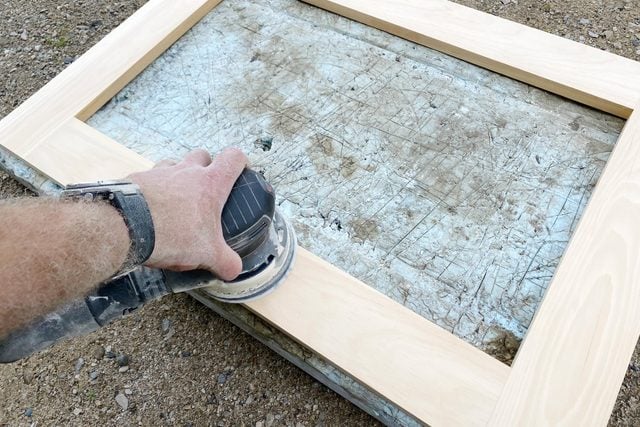
Vacuum the Frame and Apply Finish
We chose not to stain or paint our frame. If you want to stain the wood, do that and then apply a wipe-on poly finish, or paint the frame whatever color you want. Here are the rest of the steps for finishing:
- Vacuum the frame and surrounding area thoroughly, making sure you remove all dust particles before finishing.
- Wet a fresh shop rag with Wipe-On Poly (or the wipe-on finish of your choice), then rub it into the front face and all edges of the frame. There’s no need to finish the back.
- Let the finish dry overnight. Then lightly hand sand all surfaces with 220-grit paper, making sure not to sand right through the finish.
- Apply a second coat of finish. Repeat the process, applying as many coats as you like — three is typical.
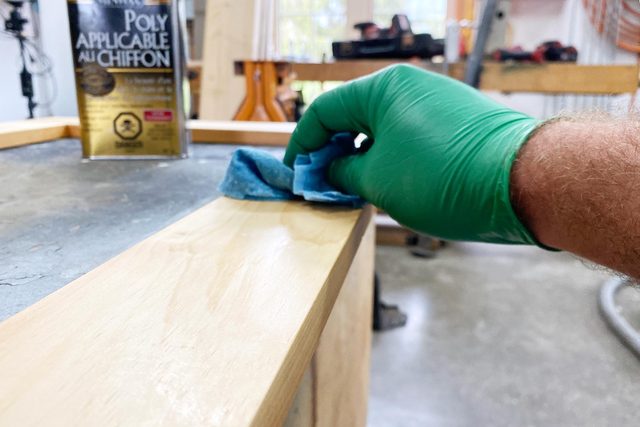
Trace Around Mirror on Back of Frame
- With the finish fully dry, lay the frame face down on a flat surface covered with a large towel, piece of paper or cardboard to protect the finish.
- Position the mirror face down on the frame.
- Use your tape measure to fine-tune its position until the overhang is equal on all sides.
- Lightly trace around the edges of the mirror with a pencil, making a reference line on the back of the frame.
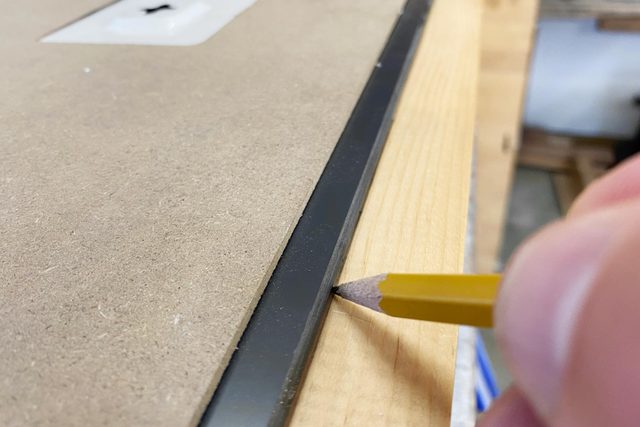
Glue Mirror to Frame
- Remove the mirror from the frame and place it to the side.
- Use your caulk gun to lay a medium-sized bead (in this case, is a continuous line of adhesive dispensed onto the work surface) of construction adhesive on the back of the frame, positioned midway between the frame’s inner edge and the line you traced.
- Gently lay the mirror face down on the glue, using the line you drew as a visual reference to position the mirror correctly.
- Place something heavy (approximately 10 lbs.) in the middle of the mirror to help it bond properly to the frame. (Skip this step if your mirror lacks a reinforcing backboard to add strength.)
- Let the glue dry overnight.
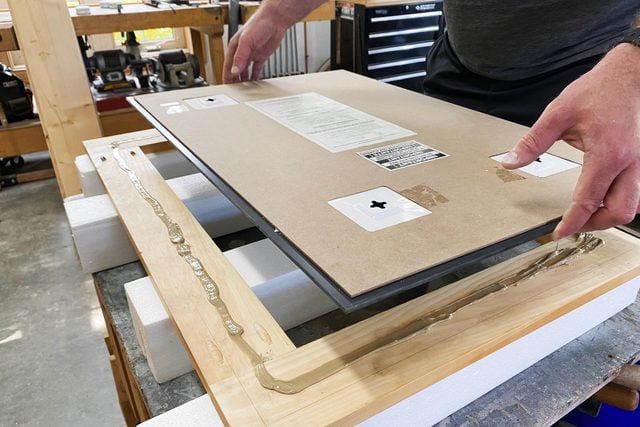
Hang the Mirror
Now it’s time to hang the mirror!
- Install mirror hanging hardware (unless your mirror came with hardware pre-installed) and a wall hook (or drywall anchor).
- Carefully hang your mirror.
- Take a look at who framed it!
